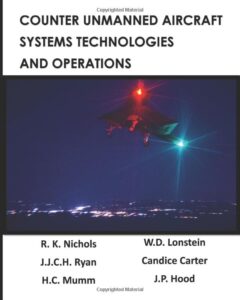The EHang AAV passenger drone technology design concept is superior to traditional manned aircraft. It follows…
The Latest Developments and Trends in Drone Technology.
Drones have evolved and are not just toys or hobbies anymore. They are becoming an integral part of various industries and sectors, from military and security to delivery and entertainment. Drones have the potential to revolutionize the way we work, live, and play, by offering new possibilities and solutions.
But what are the latest developments and trends in drone technology that are driving this innovation and transformation? In this post, we will explore some of the most exciting and advancements in drone sensors, regulations, countermeasures, and applications .
Sensor Integration
One of the key factors that enable drones to perform complex tasks and functions is the integration of various sensors that collect, process, and transmit data. Sensors can help drones to navigate, avoid obstacles, detect objects, measure distances, capture images, and more.
As sensors get smaller, cheaper, and more powerful, drone technology can benefit from improved data quality, accuracy, and automation. For example, Light Detection and Ranging (LiDAR) sensors use laser pulses to create 3D maps of the environment, which can be useful for surveying, mapping, agriculture, mining, and archaeology.
Another example is thermal imaging sensors, which can detect heat signatures and provide visibility in low-light or foggy conditions. Thermal imaging can be used for search and rescue operations, wildlife monitoring, firefighting, security, and inspection.
Improved Regulatory Outlook
Another factor that influences the development and adoption of drone technology is the regulatory framework that governs its use.
The UK is one of the countries that is leading the way in creating a favorable regulatory environment for drone technology. The UK plans to launch the world’s biggest drone superhighway, which will be a 265-kilometer air corridor that will connect towns and cities in southern and central England.
The drone superhighway will operate at an altitude below the regular flight corridors and will use ground-based sensors to detect other forms of aviation. Drone operators will have to sign up to use the superhighway and follow strict regulations to prevent collisions with manned aircraft or other drones.
Counter-UAS Systems
As drone technology becomes more widespread and accessible, there is also a need to develop countermeasures to prevent or mitigate malicious or unauthorized use of drones. Drones can pose threats to critical infrastructure, public safety, privacy, security, and airspace management if they are used for espionage, sabotage, terrorism, or crime.
Counter-Unmanned Aerial Systems (C-UAS) are systems that can detect, identify, track, and neutralize drones that pose a risk or a nuisance. C-UAS systems can use various methods such as jamming, spoofing, hacking, shooting, netting, or capturing to disable or destroy drones.
C-UAS systems are becoming more sophisticated and diverse as they adapt to different scenarios and challenges. For example, some C-UAS systems can use artificial intelligence (AI) to analyse drone behavior patterns and predict their intentions. Others can use drones themselves to intercept or escort rogue drones away from sensitive areas.
Surveying and Mapping
One of the most common and useful applications of drone technology is surveying and mapping. Drones can provide fast, accurate, and cost-effective data collection for various purposes.
This includes land management, urban planning, construction monitoring, environmental assessment, and disaster response.
Drones can capture high-resolution images and videos of large areas and process them into georeferenced maps and models using software tools such as photogrammetry or orthophoto generation.
This enables integration with other technologies such as GPS, GIS, or BIM to provide spatial information and analysis for decision making and problem solving.
Further advantages of using this technology over traditional methods of surveying and mapping, include such things as reducing human error, risk, and labor, increasing efficiency, and productivity, and improving accessibility and scalability.
Conclusion
Technology is evolving rapidly and expanding its applications and uses across various industries and sectors. The latest developments and trends in drone sensors, regulations, countermeasures, and applications are creating new opportunities and challenges for drone operators .
Drones have the potential to transform the way we work, by offering new possibilities and solutions that were previously unimaginable or impractical.
